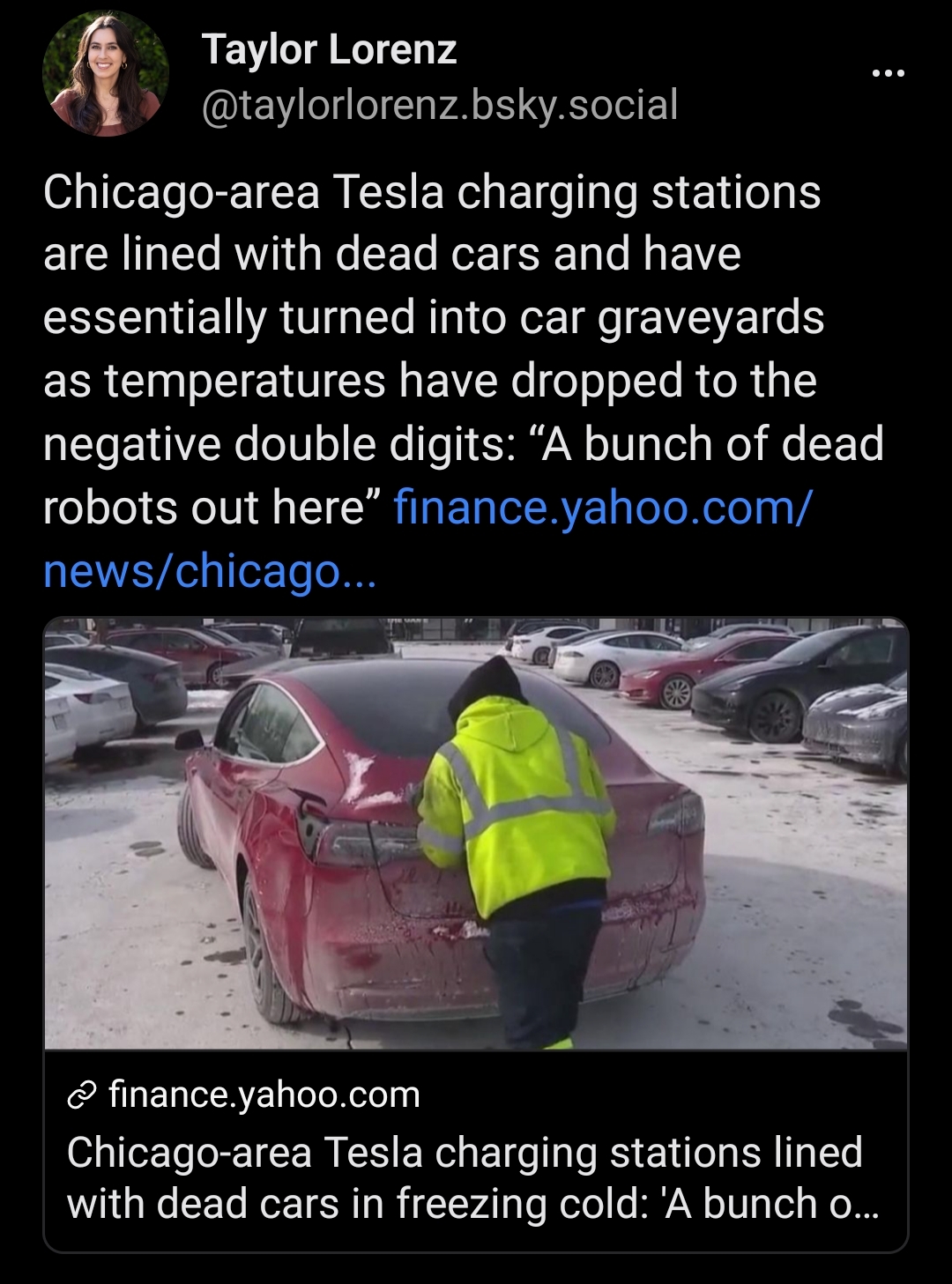this post was submitted on 16 Jan 2024
296 points (87.0% liked)
People Twitter
6958 readers
2025 users here now
People tweeting stuff. We allow tweets from anyone.
RULES:
- Mark NSFW content.
- No doxxing people.
- Must be a pic of the tweet or similar. No direct links to the tweet.
- No bullying or international politcs
- Be excellent to each other.
- Provide an archived link to the tweet (or similar) being shown if it's a major figure or a politician.
founded 2 years ago
MODERATORS
you are viewing a single comment's thread
view the rest of the comments
view the rest of the comments

The main downside to an electric vehicle. The battery cannot handle cold (or extreme heat).
We do need a cold weather capable, green option.
Hydrogen fuel cells might just be the answer, but hydrogen is extremely hard to handle and store. Unless it's not stored as raw hydrogen...
Anhydrous Ammonia is liquid while under pressure, and is extremely energy dense, we have a shitload of infrastructure around making and transporting it, and it only kills people who are exposed to it.
Which would never be a problem in a personal vehicle.
It is an amazing option for container ships.
Now, making ammonia is still somewhat carbon intensive, but there are ways to control that and capture at the source...
Cannot handle cold is a bit extreme. My EV averages around 232 miles of range now (7 years old) charging to 80% is about 185-190 miles of range. When the temperatures dip to into the negatives, I can get about 110-120 miles comfortably (heat on/heated seats, heated wheel). Am I road tripping in that temperature range, no. But a daily commute and cold soaking in the office parking lot is still easily accomplished.
A while back we had a prolonged power outage and our supercharger was pretty backed up with people that couldn't charge at home. My guess is the picture above is a similar situation. People running their cars down and then getting stuck in a supercharger line while their heater sucks down what little power they have left.
I agree, hydrogen technology and anything else that can bring sustainability to transportation is great, but saying one option we currently have available can't work in heat or cold is a stretch.
This isn't a battery problem per se as others have pointed out, these are temperatures where ICE vehicles would struggle to start.
The main reason why ICE vehicles struggle to start in the cold, is tied fairly closely to the battery.
There are some other parts that don't like the cold, but the battery is by far the most sensitive.
The engine oil having the consistency of molasses isnt doing anyone any favors either.
Yep. C'mon people, think!